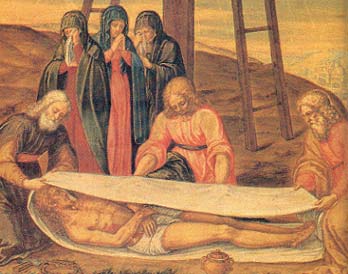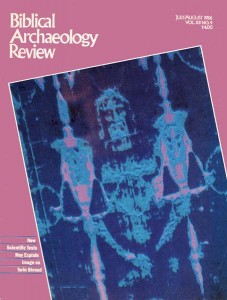Shroud of Turin—What It Is and Where It’s Been
Sidebar to: New Evidence May Explain Image on Shroud of Turin

A skilled weaver crafted the Shroud of Turin, spinning bleached linen and then looming the thread in a herringbone twill pattern. The shroud measures 14.25 feet long and 3.58 feet wide. Sometime after it was woven, but before it appeared in northeastern France in the 14th century, a 3.5-inch-wide linen strip of matching weave was sewn onto the left edge of the cloth.
Faint images appear on the cloth—images of the front and back of an unclothed man, about 5 feet 7 inches tall, with long hair and a beard. If the images were produced by a body, that body would have been placed, lying on its back, on the bottom half of the cloth; then the cloth would have been stretched over the top of the body.
The man whose images appear on the cloth seems to have suffered numerous wounds, some of them leaving what look like bloodstains on the cloth. There is a large wound in his left side and another in his right wrist; there are shoulder abrasions, puncture marks in the head and scores of small straight wounds covering the body from the neck down.
But even more striking than the clear signs of a tortuous death is the great detail in the image of the man’s face. Lips, eyelids, nostrils are all astonishingly clear, and the composite visage arrestingly lifelike and undistorted. The hands, too, appear clearly, while other areas, like the chest and toes, are poorly defined, and some areas, like the genitals, are invisible.
Already a library member? Log in here.
Institution user? Log in with your IP address.

